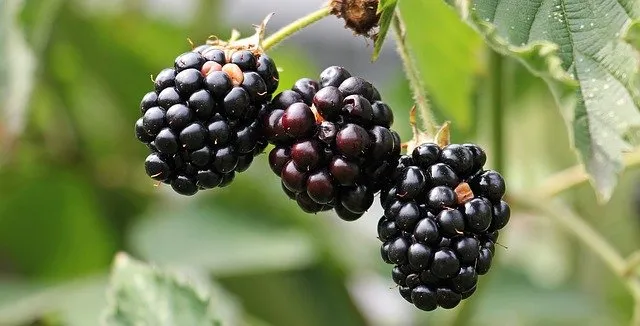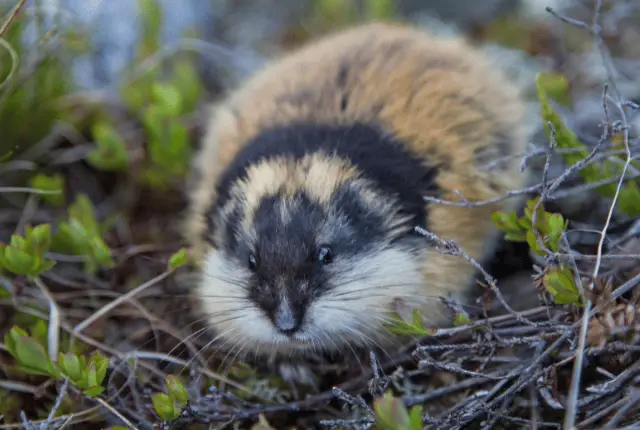As an Amazon Associate I earn from qualifying purchases.
Have you ever wondered what it takes to survive in the Arctic? The harsh, cold climate of the Arctic can be a challenging environment for any animal, but the lemming has managed to adapt and thrive in this unforgiving landscape. While lemmings are perhaps best known for their mass migrations and dramatic cliff jumps, their diet is crucial to their survival. From mosses and lichens to roots and berries, these small rodents have developed various strategies to find food and sustain themselves throughout the long, cold winters. So, what do lemmings eat? In this blog post, we’ll delve into the fascinating world of lemming cuisine, exploring their different foods and the unique ways they have adapted to survive in one of the harshest environments on Earth.
What Do Lemmings Eat?
Lemmings are small, herbivorous rodents belonging to the family Cricetidae, including hamsters and voles. They are found in the Arctic tundra regions of North America, Europe, and Asia. The diet of lemmings primarily consists of vegetation, with a few exceptions. In this blog post, we will explore the foods that lemmings eat and explain their nutritional value.
1. Grasses And Sedges
Lemmings feed on various grasses and sedges that grow in the tundra. These include species such as cottongrass, tussock grass, and Arctic sedge. These plants are an excellent carbohydrate source, providing the energy lemmings needed for daily activities such as burrowing and foraging.
2.Mosses And Lichens
In addition to grasses and sedges, lemmings also consume mosses and lichens. These plants are fiber-rich and are a good source of vitamins and minerals such as vitamin C and calcium. They also contain compounds called phytochemicals, which have antioxidant properties and help protect the body from damage caused by free radicals.
3. Shrubs And Willows
Lemmings also eat the leaves and stems of shrubs and willows that grow in the tundra. These plants provide a source of protein, which is essential for building and repairing tissues in the body. They are also rich in phenolic compounds, which have anti-inflammatory properties and help boost the immune system.
4. Insects And Other Small Animals
While lemmings are primarily herbivorous, they occasionally consume insects and other small animals such as voles and birds. These sources of protein help supplement their diet and provide essential nutrients that may be lacking in their plant-based diet.
5. Fungi
Finally, lemmings have also been observed eating fungi such as mushrooms and lichens. These foods are excellent sources of nutrients such as potassium, copper, and selenium, essential for maintaining healthy bodily functions.
6. Roots And Bulbs
Lemmings have been known to dig up and consume the roots and bulbs of certain plants. These underground parts of the plants are a rich source of carbohydrates and other nutrients and can provide a valuable food source for lemmings when above-ground vegetation is scarce.
7. Berries
Some species of lemmings, such as the collared lemming, also eat berries. These fruits are rich in antioxidants and other beneficial compounds and provide a valuable source of nutrition for lemmings during the short Arctic summer when they are available.
8. Seaweed
Lemmings that live near the coast have been observed eating seaweed. Seaweed is rich in iodine, which is important for maintaining a healthy thyroid gland and other nutrients such as magnesium and calcium.
What Eats Lemmings?
Lemmings are an important food source for various predators in the Arctic ecosystem. These small rodents are a key part of the food chain in this harsh and unforgiving environment, providing vital nutrition for various animals living in the tundra.
One of the primary predators of lemmings is the Arctic fox. These small, nimble predators rely heavily on lemmings for their diet, particularly during winter when other prey is scarce. They adapt well to the harsh Arctic conditions and can locate and catch lemmings using their keen sense of hearing and smell.
Birds of prey also play an important role in the lemming’s ecosystem. Species such as snowy owls and rough-legged hawks are known to feed on lemmings and may even follow these rodents as they move across the tundra for food. These birds can spot lemmings from a great distance and swoop down to catch them with their sharp talons.
Other predators that eat lemmings include ermines, weasels, and stoats. These small carnivores can catch lemmings using their speed and agility to pursue them through the tundra. They can also follow the scent of lemmings, which allows them to track these rodents even when hiding in their burrows.
Even larger predators, such as wolves and wolverines, have occasionally eaten lemmings, particularly when other food sources are scarce. These predators can catch lemmings by using their strength and size to overpower them or by following their scent to their burrows and digging them out.
How Lemmings Help Our Ecosystem?
Lemmings are small rodents that live in the Arctic tundra and have long been the subject of fascination due to their unique behavior and survival strategies. While these creatures may seem insignificant, they play an important role in the ecosystem and can positively impact the environment. Here are some ways that lemmings help our ecosystem:
Firstly, lemmings help to cycle nutrients through the ecosystem by consuming plants and releasing nutrients back into the soil through their waste. This helps to maintain soil fertility and support the growth of other plants. In addition, lemming burrows can provide habitat for other animals, such as Arctic foxes and weasels, which can use abandoned burrows as dens and shelters.
Secondly, lemmings can also play a role in controlling plant growth in the tundra. By consuming certain types of plants, lemmings can prevent them from overgrowing and dominating the landscape, which can help maintain the ecosystem’s overall biodiversity.
Thirdly, lemmings are an important food source for various predators in the Arctic, including Arctic foxes, owls, and stoats. By serving as a food source for these animals, lemmings help to support the larger food web and maintain the balance of the ecosystem.
Finally, lemmings also can modify their environment through their foraging behavior. By creating paths and trails as they move through the tundra in search of food, lemmings can help break up the landscape’s monotony and create microhabitats that can support other plants and animals.
Final Words
Now you know what lemmings eat and how their diet is important in the Arctic ecosystem. Despite their small size, lemmings greatly impact the environment and contribute to its overall health and vitality. By understanding the significance of these tiny rodents and their diet, we can gain a greater appreciation for the interconnectedness of all living things and work towards a more sustainable future for our planet.
You can also read
WHAT DO HORSESHOE CRABS EAT? 6 FOODS THEY LOVE!
What Do Grackles Eat? A Complete Guide
WHAT DO BABY GRACKLES EAT? A COMPLETE GUIDE
What Do Blue Crabs Eat? A Complete Guide
Amazon and the Amazon logo are trademarks of Amazon.com, Inc, or its affiliates.



